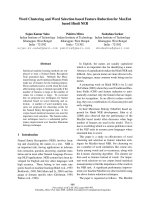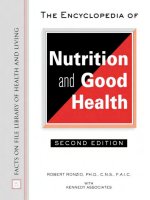Withholding and Withdrawing Life-prolonging Medical Treatment Guidance for decision making Second edition ppt
Bạn đang xem bản rút gọn của tài liệu. Xem và tải ngay bản đầy đủ của tài liệu tại đây (435.12 KB, 113 trang )
Withholding and Withdrawing
Life-prolonging Medical
Treatment
Guidance for decision making
Second edition
incorporating guidance on the Human Rights Act
British Medical Association
i
© BMJ Books 2001
BMJ Books is an imprint of the BMJ Publishing Group
All rights reserved. No part of this publication may be reproduced, stored in a
retrieval system, or transmitted, in any form or by any means, electronic,
mechanical, photocopying, recording and/or otherwise, without the prior written
permission of the publishers.
First published in 1999
by BMJ Books, BMA House, Tavistock Square,
London WC1H 9JR
First edition 1999
Second edition 2001
www.bmjbooks.com
British Library Cataloguing in Publication Data
A catalogue record for this book is available from the British Library
ISBN 0-7279-1615-7
Typeset by FiSH Books, London
Printed and bound by MPG Books, Bodmin, Cornwall
Contents
Foreword vii
Medical Ethics Committee ix
Editorial Board xi
Acknowledgements xiii
Introduction xv
PART 1 Setting the scene for decision making 1
1. The primary goal of medicine 1
2. Scope of this guidance 5
3. Definitions 6
4. The inevitability of death 11
5. The inherent uncertainty in medical treatment 11
6. Withholding or withdrawing treatment 12
7. How to use this guidance 14
PART 2 Decisions involving adults who have the
capacity to make and communicate decisions or those
who have a valid advance directive 15
8. Medical assessment 15
9. Contemporaneous refusals of life-prolonging treatment 15
10. Advance refusals of life-prolonging treatment 18
11. Contemporaneous requests for life-prolonging treatment 20
12. Advance requests for life-prolonging treatment 24
iii
PART 3 Decisions involving adults who do not have
the capacity to make or communicate decisions and
do not have a valid advance directive and decisions
involving children and young people 25
PART 3A Decisions involving adults 25
13. Capacity and incapacity 25
PART 3B Decisions involving babies, children and young people 30
14. Duties owed to babies, children and young people 30
15. Decision making for babies and young children who
cannot consent for themselves 34
16. Decision making by competent minors 38
PART 3C The process of decision making for children and adults
who lack the ability to make or communicate decisions 45
17. Medical factors to be considered 45
18. Ethical factors to be considered 51
19. Legal factors to be considered 58
PART 3D Decisions about withholding or withdrawing
artificial nutrition and hydration 62
20. Additional guidance 62
21. Legal considerations 63
22. Additional procedural safeguards 67
PART 4 Once a decision has been reached to withhold
or withdraw life-prolonging treatment 69
23. Informing others of the decision 69
24. Conscientious objection 70
25. Recording and reviewing the decision 70
26. Providing support 72
Withholding and Withdrawing Life-prolonging Medical Treatment
iv
PART 5 Main points arising from this guidance 73
Appendix 1 Some useful addresses 79
Notes and references 83
Index 88
Withholding and Withdrawing Life-prolonging Medical Treatment
v
This Page Intentionally Left Blank
Foreword
Decisions to withhold or withdraw life-prolonging treatment are
among the most difficult for patients and health professionals to
make. Most people accept that treatment should not be prolonged
indefinitely, when it has ceased to provide a benefit for the patient.
But doctors, patients and their families, members of the clinical
team and society need reassurance that each individual decision is
carefully thought through, is based on the best quality information
available and follows a widely agreed procedure. This is especially
the case in view of the implementation of the Human Rights Act.
The guiding principle underlying any decision of this kind must be
to protect the dignity, comfort and rights of the patient; to take
into account the wishes – if known – of the patient and, where the
patient is not competent, the views of those close to the patient.
The need for guidance in this area became clear from a wide-
ranging consultation exercise, undertaken by the British Medical
Association (BMA) in 1998, which also confirmed that one of the
most difficult decisions relates to withholding or withdrawing
artificial nutrition and hydration.
Confusion has arisen from the fact that guidance from the
courts on withdrawing artificial nutrition and hydration
specifically refers to patients in persistent vegetative state, without
making reference to other serious conditions in which a decision
to withhold or withdraw artificial nutrition and hydration might
arise. With some conditions, such as advanced dementia or very
severe stroke, a practice has developed where, in some cases, a
decision is made that life-prolonging treatment, including artificial
nutrition and hydration, is not a benefit to the patient and should
not be provided or continued. The BMA does not believe that
these cases should routinely be subject to court review but
considers that there should be in place standard policies and
guidance outlining the criteria and steps to be followed in reaching
vii
these decisions in all cases. As with all conditions, patients should
be assured of uniformly high-quality assessment of their condition
and of the potential treatment options available. Guidelines help
to ensure that proper and transparent procedures are followed.
This guidance attempts to document the type of factors which
should be taken into account, the process which should be
followed and the safeguards which should be in place to ensure
that these decisions, and decisions to withhold or withdraw other
life-prolonging treatments, are made appropriately.
D
R MICHAEL WILKS
Chairman, BMA Medical Ethics Committee
Withholding and Withdrawing Life-prolonging Medical Treatment
viii
Medical Ethics Committee
A publication from the BMA’s Medical Ethics Committee (MEC)
whose membership for 1998/99 was:
Sir Dilwyn Williams President, BMA
Professor Brian Chairman of the Representative Body,
Hopkinson BMA
Dr Ian Bogle Chairman of Council, BMA
Dr W James Appleyard Treasurer, BMA
Dr Michael Wilks* Chairman, Medical Ethics Committee
Dr Paddy Glackin Deputy Chairman, Medical Ethics
Committee
Professor Alastair Professor of Ethics in Medicine, Bristol
Campbell
Dr Andrew Carney* Consultant Psychiatrist, London
Dr Peter Dangerfield Medical Academic, Liverpool
Professor Robin Downie Professor of Moral Philosophy,
Glasgow
Professor Len Doyal* Senior Lecturer in Medical Ethics,
London
Dr Sam Everington General Practitioner, London
Mrs Elizabeth Fradd Nursing Directorate, NHS Executive
Professor Raanan Gillon* General Practitioner and Professor of
Medical Ethics, London
Dr R John Givans General Practitioner,Yorkshire
Professor J Stuart Academic, Former Public Health
Horner Physician, Preston
Mrs Anne MacLean Moral Philosopher, Swansea
Professor Sheila Director of Institute of Law and
McLean* Ethics, Glasgow
* Member of the MEC Working Group which considered the responses to the
BMA’s consultation exercise and prepared the guidance.
ix
Mr Derek Morgan* Reader in Health Care Law and
Jurisprudence, Cardiff
Dr Jane Richards* Former General Practitioner
Dr Ewen Sim Histopathologist, Bolton
Dr Jeremy Wight* Public Health Physician, Sheffield
Sir Cyril Chantler General Medical Council Observer
Ms Jane O’Brien General Medical Council Observer
Ms Rosie Wilkinson* Royal College of Nursing Observer
* Member of the MEC Working Group which considered the responses to the
BMA’s consultation exercise and prepared the guidance.
Withholding and Withdrawing Life-prolonging Medical Treatment
x
Editorial Board
Head of Professional Professor Vivienne Nathanson
Resources and Research
Group:
Project Manager: Veronica English
Written by: Veronica English
Gillian Romano-Critchley
Ann Sommerville
Legal advice on the impact Professor Conor Gearty,
of the Human Rights Act: Counsel
Editorial Secretary: Patricia Fraser
Information about developments since the publication of this
guidance may be obtained from the BMA’s website at: http://
www.bma.org.uk or by contacting the Medical Ethics Department:
British Medical Association
BMA House
Tavistock Square
London WC1H 9JP
Tel: 020 7383 6286
Fax: 020 7383 6233
E-mail:
xi
This Page Intentionally Left Blank
Acknowledgements
The BMA is most grateful to everyone who responded to its
consultation exercise carried out during 1998. Over 2,000
responses were received and these were instrumental in deciding
the scope and contents of the guidance.Thanks are also due to the
many people who gave so generously of their time in commenting
on earlier drafts and discussing the very difficult medical, legal and
ethical issues with us.Whilst these contributions helped to inform
the BMA’s views, it should not be assumed that this guidance
necessarily reflects the views of all those who contributed.
Particular thanks are due to Dr Keith Andrews for providing
factual information and advice and for allowing BMA staff to visit
the Hospital for Neuro-disability in Putney to discuss the practical
dilemmas which arise with him and his staff. We would also like to
thank: Dr Timothy Chambers, Ms Sarah Elliston, Ms Marie Fox,
Ms Fiona Hass, Mr Michael Hinchliffe, Dr Damian Jenkinson,
Professor Bryan Jennett, Mr Simon John, Ms Claire Johnston, Dr
John Keown, Dr Vic Larcher, Professor John Lennard-Jones, Dr
Simon Lovestone, Professor Michael Lye, Dr Steven Luttrell,
Professor John Stanley, Ms Cheryl Viney, Dr Stephen Webster and
The UK Acquired Brain Injury Forum. The Medical Ethics
Committee is also grateful for the help and advice provided by the
BMA’s Science and Research Adviser, Dr Bill O’Neill.
xiii
This Page Intentionally Left Blank
Introduction
In medicine, decisions are made on a daily basis about the
provision, withholding or withdrawing of treatments, many of
which could prolong life. Treatments which could provide a
therapeutic benefit are not inevitably given but are weighed
according to a number of factors, such as the patient’s wishes, the
treatment’s invasiveness, side effects, limits of efficacy and the
resources available. In relation to many conditions, a body of
accepted practice has been building about the criteria for
treatment and non-treatment decisions. Nevertheless, the BMA is
concerned that comprehensive guidance outlining the criteria and
steps to be followed in making these decisions, particularly where
the decision involves assessing the best interests of incompetent
patients, does not exist. This is due partly to the fact that many of
the techniques for prolonging the biological functions of severely
brain-damaged people are relatively new. The main disadvantage
of not having clear written policies and guidance is that patients
may suffer by being subjected to inappropriate treatments or by
having treatment withdrawn when it could provide a benefit.
Without clear guidance, the public may feel that different
standards are being applied in similar cases and doctors do not
necessarily have any benchmark by which to audit their own
decisions. Where published guidance on some aspects of this
subject exists, this document takes account of it.
1
In this
document, the BMA seeks to provide a coherent and
comprehensive set of principles which apply to all decisions to
withhold or withdraw life-prolonging treatment. It is hoped that
this general guidance will stimulate the development of local
policies and guidelines as part of a wider network of safeguards for
doctors and patients.
Though the publication of the first edition of this guidance
preceded implementation of the Human Rights Act 1998 on 2
October 2000, that piece of legislation is clearly relevant to these
types of decisions. Indeed, this second edition of the guidance has
been substantially revised to take the Act into account. (The BMA
xv
has also prepared general guidance on the impact of the Human
Rights Act on medical decision making.) Under the terms of the
Act all public authorities have to act in accordance with the bulk
of the rights set out in the European Convention on Human
Rights, and all statutes have to be interpreted so far as possible to
be in accordance with those rights.The Convention rights include:
the right to life (Article 2); the right not to be tortured or subjected
to inhuman or degrading treatment (Article 3); the right to
security of the person (Article 5); the right to respect for privacy
(Article 8); the right to freedom of thought, conscience and
religion (Article 9); the right to freedom of expression including
the right to receive and impart information (Article 10); and the
right not to be discriminated against in the enjoyment of these
various rights (Article 14). No legislation so pervasive as the
Human Rights Act has ever been passed by a British legislature,
and its impact on UK law is likely to be dramatic. However the
basic principles that underpin the Act – most significantly respect
for human dignity and respect for legality – are already ideas that
underpin much of the ethical and legal framework within which
current practice in the withholding and withdrawing of life-
prolonging treatment occurs. The requirements of the Human
Rights Act reflect, very closely, existing good medical practice. So
the Act is less foreign in this field than it will be in other areas of
the law. However it speaks a new legal language and this does need
to be taken into account. It also extends its duties directly only to
public authorities, without defining what these are. In this
guidance we have not tried to answer this question, but have rather
made an assumption that all health professionals and health
teams, howsoever constituted, should regard themselves as bound
by the terms of the Act.
Few issues in medicine are more complex and difficult than
those addressed by patients, their relatives and their doctors
concerning the decision to withhold or withdraw life-prolonging
treatment. Technological developments continually extend the
range of treatment options available to prolong life when organ or
system failure would naturally result in death. Cardiopulmonary
resuscitation, renal dialysis, artificial nutrition, hydration and
ventilation prolong life and, in some cases, allow time for natural
recovery to occur but these techniques in themselves cannot
reverse a patient’s disease. Patients with progressive conditions
Withholding and Withdrawing Life-prolonging Medical Treatment
xvi
such as Alzheimer’s disease or Motor Neurone Disease can have
their lives prolonged considerably by the application of
technology, yet their irreversibly deteriorating conditions will
eventually result in death. The condition of other patients, for
example those with very severe brain damage, may remain stable
for many years if life-prolonging treatment is provided but with no
hope of recovering more than very minimal levels of awareness of
their surroundings.They may lack ability to interact with others or
capacity for self-directed action. In such severely damaged
patients, treatment to prolong life by artificial means may fail to
provide sufficient benefit to justify the intervention and the proper
course of action may be to withhold or withdraw further
treatment.
Health professionals are well aware that the availability of a
technique does not necessarily mean that its use would be
appropriate in every case. It is evident, however, that the lack of
guidance about the type of circumstances in which non-treatment
decisions would be appropriate, and the factors which should be
taken into account in reaching these decisions, has led to
considerable confusion and concern. This anxiety is found among
health professionals, who are worried about the scope of their
discretion for making such decisions, and among patients and
their relatives who are worried that treatment may either be
withdrawn prematurely or continued long past the stage at which
it continues to be a benefit.
Matters of life and death give rise to emotive and impassioned
debate. Such responses cannot and should not be ignored. The
symbolic importance of appearing to “give up” on some patients
cannot be over-estimated and sensitivity is required to ensure that
such impressions are not given. As we stress throughout, good
communications, listening to all relevant parties and thoroughly
investigating the options are central to good decision making. The
decisions addressed in this document may generate conflicting
views. This guidance urges a cautious and thoughtful approach to
such decisions, recognising the difficult areas of ethical tension,
the legal uncertainties
2
and the possibility of divergence of medical
opinion, whilst attempting to provide practical assistance to those
patients and health professionals who must confront these issues.
Withholding and Withdrawing Life-prolonging Medical Treatment
xvii
This Page Intentionally Left Blank
PART 1 Setting the scene for
decision making
1. The primary goal of medicine
1.1 The primary goal of medical treatment is to benefit
the patient by restoring or maintaining the patient’s
health as far as possible, maximising benefit and
minimising harm. If treatment fails, or ceases, to give
a net benefit to the patient (or if the patient has
competently refused the treatment) that goal cannot
be realised and the justification for providing the
treatment is removed. Unless some other justification
can be demonstrated, treatment that does not provide
net benefit to the patient may, ethically and legally, be
withheld or withdrawn and the goal of medicine
should shift to the palliation of symptoms.
Treatment which achieves its physiological aim may fail to provide
a net benefit to the patient because it is unable to achieve a level
of recovery which justifies the corresponding burdens of the
treatment. Or, the treatment may keep the patient alive but be
unable to stop the progression of the disease or provide any hope
of the patient recovering self-awareness, awareness of others and
the ability intentionally to interact with them. Whilst the BMA
reiterates its opposition to active, intentional measures taken with
the purpose of ending a patient’s life, it does not hold to the view
that there is an absolute value in being alive regardless of the
patient’s wishes or medical condition.
Debate on this subject has tended to focus on assessing the
justification for withdrawing or withholding treatment. In the
BMA’s view the emphasis should shift to considering whether the
benefits of the treatment justify the intervention. For every
proposed or actual medical intervention, a judgment should be
made about whether that intervention would be worthwhile, in the
sense of providing some benefit to the individual patient,
1
recognising that each patient has his or her own values, beliefs,
wishes and philosophies. In the BMA’s opinion, this approach, of
considering benefit, reflects both the emphasis on human dignity
in the Human Rights Act and the approach adopted by the House
of Lords in its consideration of the case of Tony Bland.
3
Bland was
in a persistent vegetative state following the Hillsborough Stadium
football disaster.When considering whether artificial nutrition and
hydration could be withdrawn, Lord Goff of Chieveley said the
correct question was not whether it was “in his best interests that
the treatment should be ended. But whether it is in his best
interests that treatment which has the effect of artificially
prolonging his life should be continued”. Considered in this way,
a decision to withhold or withdraw treatment is a decision not to
provide a treatment which does not confer a net health benefit
upon the patient.
1.2 Prolonging a patient’s life usually, but not always,
provides a health benefit to that patient. It is not an
appropriate goal of medicine to prolong life at all
costs, with no regard to its quality or the burdens of
treatment.
High regard for value of life does not necessarily imply a duty
always to give life-prolonging treatment. One of the incorporated
European Convention rights in the Human Rights Act is that
“[E]veryone’s right to life shall be protected by law” (Article 2(1)).
This is a positive obligation to preserve life as well as a negative
order not to kill, but the positive obligation is not one that should
be pushed too far. The Article 2(1) guarantee in no way involves
an absolute obligation indefinitely to prolong life at all costs and
without regard to the consequences for the patient of such a
prolongation (see section 19.1). It is not the case that all lives must
be prolonged by artificial means for as long as technically possible.
Competent patients sometimes decide that the stage has been
reached beyond which, for them, continued treatment aimed at
prolonging life, although possible, would be inappropriate. Where
patients are not competent, these decisions must be taken in a way
which is perceived to reflect their wishes or best interests or, where
this is not achievable, which is not contrary to their interests or
rights. This may include a decision not to provide or continue to
Withholding and Withdrawing Life-prolonging Medical Treatment
2
provide an intervention which is not of benefit to the patient even
if the withholding or withdrawing of that treatment allows the
patient to die earlier than if the treatment were provided or
continued.
Terms such as “quality of life” are problematic and ambivalent.
They can imply that some people are less valued. But, whether
articulated or not, the concept of “quality of life” is unavoidable. It
is common currency among patients and their relatives as a way of
judging whether they should pursue further medical interventions.
A vital part of the treatment decision rests on the issue of whether
the proposed measures can restore the patient to a way of living he
or she would be likely to consider of reasonable “quality”, despite
any side effects or disadvantages of treatment. The Human Rights
Act’s strong emphasis on human dignity is another way of stressing
this central ethical principle. It must always be clear that the
doctor’s role is not to assess the value or worth of the patient but that
of the treatment. If the latter cannot benefit the patient, in terms of
restoring that person’s health to a level that he or she would find
acceptable, its use must be open to question.
The courts have specifically stated that the “quality of life”
which could reasonably be expected following treatment is an
appropriate factor to take into account when making treatment
decisions.The decision to withhold life-prolonging treatment from
a patient, R,
4
who was born with a serious malformation of the
brain and cerebral palsy, was challenged in the High Court in
1996 on the grounds that it was “irrational and unlawful” to
permit medical treatment to be withheld on the basis of an
assessment of a patient’s quality of life.That appeal was dismissed.
Drawing on the 1990 case of Re J,
5
which concerned a baby who
was born prematurely with severe brain damage, the court decided
that it was appropriate to consider whether the patient’s life, if
treatment was given, would be “so afflicted as to be intolerable”.
If the patient’s condition has reached that level of severity and
treatment is unable to lead to any improvement, this is one of the
situations in which treatment could, legally and ethically, be
withdrawn. The Human Rights Act guarantees protection for life
but it also declares that “[N]o one shall be subjected to torture or
to inhuman or degrading treatment or punishment” (Article 3).
Life should not be artificially preserved where the treatment to
secure this leaves a patient in what might be judged as “an
Withholding and Withdrawing Life-prolonging Medical Treatment
3
inhuman or degrading state”. The doctor must balance his or her
duty to protect life with his or her obligation not to subject the
patient to inhuman or degrading treatment. It is likely that in time
case law will clarify how this is to be judged. It may well be that
the interpretation of “inhuman or degrading” will follow the
courts’ previous decisions in which the patient’s “quality of life”
has been a consideration.
Views differ as to what factors should be considered in deciding
whether continued provision of life-prolonging treatment would
be a benefit to a patient who is unable to express his or her own
wishes. Some people believe that there is intrinsic value in being
alive and therefore that prolonging life will always provide a
benefit to the patient regardless of any other factors. In this
absolute form, this is not a view which the BMA shares. The vast
majority of people with, even very severe, physical or mental
disabilities are able to experience and gain pleasure from some
aspects of their lives. Where, however, the disability is so profound
that individuals have no or minimal levels of awareness of their
own existence and no hope of recovering awareness, or where they
suffer severe untreatable pain or other distress, the question arises
as to whether continuing to provide treatment aimed at prolonging
that life artificially would provide a benefit to them. An important
factor which is often considered in making these decisions is
whether the person is thought to be aware of his or her
environment or own existence as demonstrated by, for example:
• being able to interact with others;
• being aware of his or her own existence and having an ability to
take pleasure in the fact of that existence; and
• having the ability to achieve some purposeful or self-directed
action or to achieve some goal of importance to him or herself.
If treatment is unable to recover or maintain any of these abilities,
this is likely to indicate that its continued provision will not be a
benefit to the patient. If any one of these abilities can be achieved,
then life-prolonging treatment may be of benefit and it is
important to consider these factors within the context of the
individual’s own wishes and values, where these are known, in
order to assess whether the patient would, or could reasonably be
expected to, consider life-prolonging treatment to be beneficial.
Withholding and Withdrawing Life-prolonging Medical Treatment
4
1.3 The primary goal of medicine – to benefit the
patient’s health with minimal harm – should be
explained to patients and/or those close to them so
that they can understand why treatment is given and
why, in some circumstances, a decision to withhold or
withdraw further life-prolonging treatment may need
to be considered.
When treatment fails or ceases to provide a net benefit to the
patient, that primary justification for continuing to provide it no
longer exists. Where the patient is competent any decision should
involve sensitive and detailed discussion with the patient. Where
competence is lacking and, following appropriate consultation
with those close to the patient (see section 18.3), a decision has
been made to withhold or withdraw a particular treatment, the
reasons for this should be carefully explained to those close to the
patient so that it is not interpreted as “giving up” on or
abandoning the patient. Not only is this consultation the ethical
way to proceed, it may also frequently be required as a matter of
law under Article 8 of the European Convention which obliges
health professionals (as it does all public authorities) to respect a
person’s private and family life.
2. Scope of this guidance
2.1 The main focus of this guidance is decisions to
withdraw or withhold life-prolonging treatment from
patients who are likely to live for weeks, months, or
possibly years, if treatment is provided but who,
without treatment, will or may die earlier. In some
areas mention is also made of treatment decisions for
those patients whose imminent death is inevitable.
This guidance focuses on the process through which decisions are
made to withdraw or withhold life-prolonging treatment from all
types of patient – competent adults, incompetent adults, children
and babies. Such decisions are taken on a regular basis,
throughout the country, where it is decided, for example, that the
burdens of further aggressive chemotherapy or dialysis outweigh
the benefits for the particular individual. Similarly, a decision may
Withholding and Withdrawing Life-prolonging Medical Treatment
5
be made that, in the event of cardiac arrest, a patient should not
be subjected to cardiopulmonary resuscitation because the
chances of recovery, or the level of recovery which could
reasonably be expected, would not provide a net benefit to that
patient. These decisions are always profound and cannot be taken
lightly. The intention of this guidance is to set down what is
already established good practice in this area and to suggest some
additional safeguards for decisions to withhold or withdraw
artificial nutrition and hydration.
3. Definitions
3.1 Benefit: Health professionals have a general duty to
provide treatment which benefits their patients.
Benefit, in this context, has its ordinary meaning of
an advantage or net gain for the patient but is broader
than simply whether the treatment achieves a
particular physiological goal. It includes both medical
and other, less tangible, benefits.
There are some circumstances where the use of life-prolonging
treatment will be justified even though the side effects, burdens
and risks of the treatment itself are significant; in other cases the
use of such treatment will not be justified. In deciding which
treatment should be offered, the expectation must be that the
advantages outweigh the drawbacks for the individual patient.
Where the patient is competent he or she is the best judge of what
represents an acceptable level of burden or risk. Where the patient
is not competent, any previously expressed wishes should form a
core part of assessing the benefit to that person. To do something
to an individual against his or her wishes can, in itself, be a harm
to that person and risks also being viewed by the courts as an
infringement of their basic rights, in particular those in Article 5,
Article 8 and Article 9 of the European Convention. A Jehovah’s
Witness who has refused a life-prolonging blood transfusion, for
example, will, in some sense, be harmed by being given a
transfusion against his or her stated wishes. If there is evidence
that the individual would not view a particular procedure as
offering benefit, that must be taken into account. Judgments
should be made according to the strength of evidence available.
Withholding and Withdrawing Life-prolonging Medical Treatment
6









